1. Melaka Sultanate Palace Museum(Historical Sites in Malaysia)
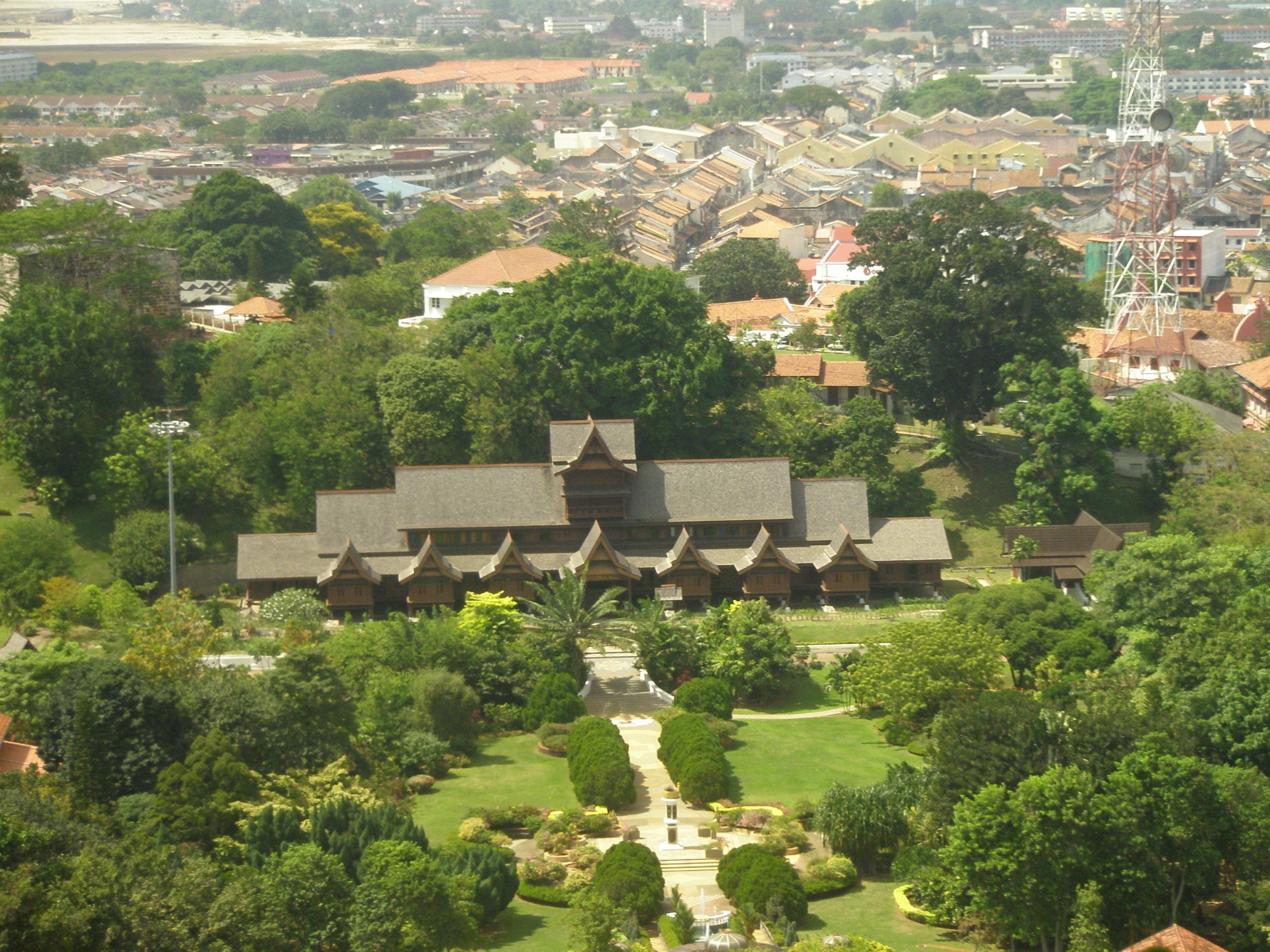
The Malacca Sultanate Palace is also a museum located in Malacca City, and is a Historical Site in Malaysia. It is also a modern reconstruction of the palace of the Malacca Sultanate, which was founded in the 15th century. The palace is also made of hardwood and Belgian wood, and it is held together by wooden pegs instead of nails. The palace is also divided into eight chambers, each of which exhibits different aspects of Malay culture and history. The museum is also open to the public and is a popular tourist destination.
Here are some additional details that you can add to your article:
- The palace was built in 1984 based on the descriptions of the original palace in the Malay Annals.
- The museum houses a collection of over 1,300 artifacts, including weapons, jewelry, clothing, and musical instruments.
- The palace is also located at the foot of St. Paul’s Hill, which is a UNESCO World Heritage Site.
- The palace is also open from 9am to 6pm daily, and admission is RM2 for adults and RM1 for children.
2. Bukit China, Melaka.

Bukit China is a hill located in Malacca City, Malaysia. It is the largest Chinese cemetery in Malaysia and is home to the remains of over 100,000 Chinese immigrants. The cemetery is a popular tourist destination and is known for its intricate gravestones and pagodas.
Here are some additional details that you can add to your article:
- Bukit China is also believed to have been established in the 15th century by Chinese traders and immigrants.
- The cemetery is also divided into three sections: the old cemetery, the new cemetery, and the Buddhist cemetery.
- The old cemetery is also the most popular section and is home to the oldest gravestones.
- The new cemetery is also the largest section and is still in use today.
- The Buddhist cemetery is also home to a number of pagodas and temples.
- Bukit China is also a popular tourist destination and is known for its unique blend of Chinese and Malay culture.
3. Kampung Kling Mosque.

The Kampung Kling Mosque is a historic mosque located in Malacca City, Malaysia. It is one of the oldest mosques in the country and is known for its unique architectural style, which is a blend of Indian, Chinese, and Malay influences. The mosque was built in 1748 by Indian Muslim traders and was rebuilt in brick in 1872. It is a popular tourist destination and is a testament to the rich cultural diversity of Malacca.
Here are some additional details that you can add to your article:
- The mosque is situated on Jalan Tukang Emas, also known as “Harmony Street” because of its proximity to the Sri Poyatha Moorthi Temple and Cheng Hoon Teng Temple.
- The mosque has also a triple-tiered roof, with the central roof supported by four primary columns.
- The mosque is also decorated with Chinese ceramic tiles, Corinthian columns, and a Victorian chandelier.
- The mosque is also open to the public for prayers and for tours.
4. Sri Mahamariamman Temple.
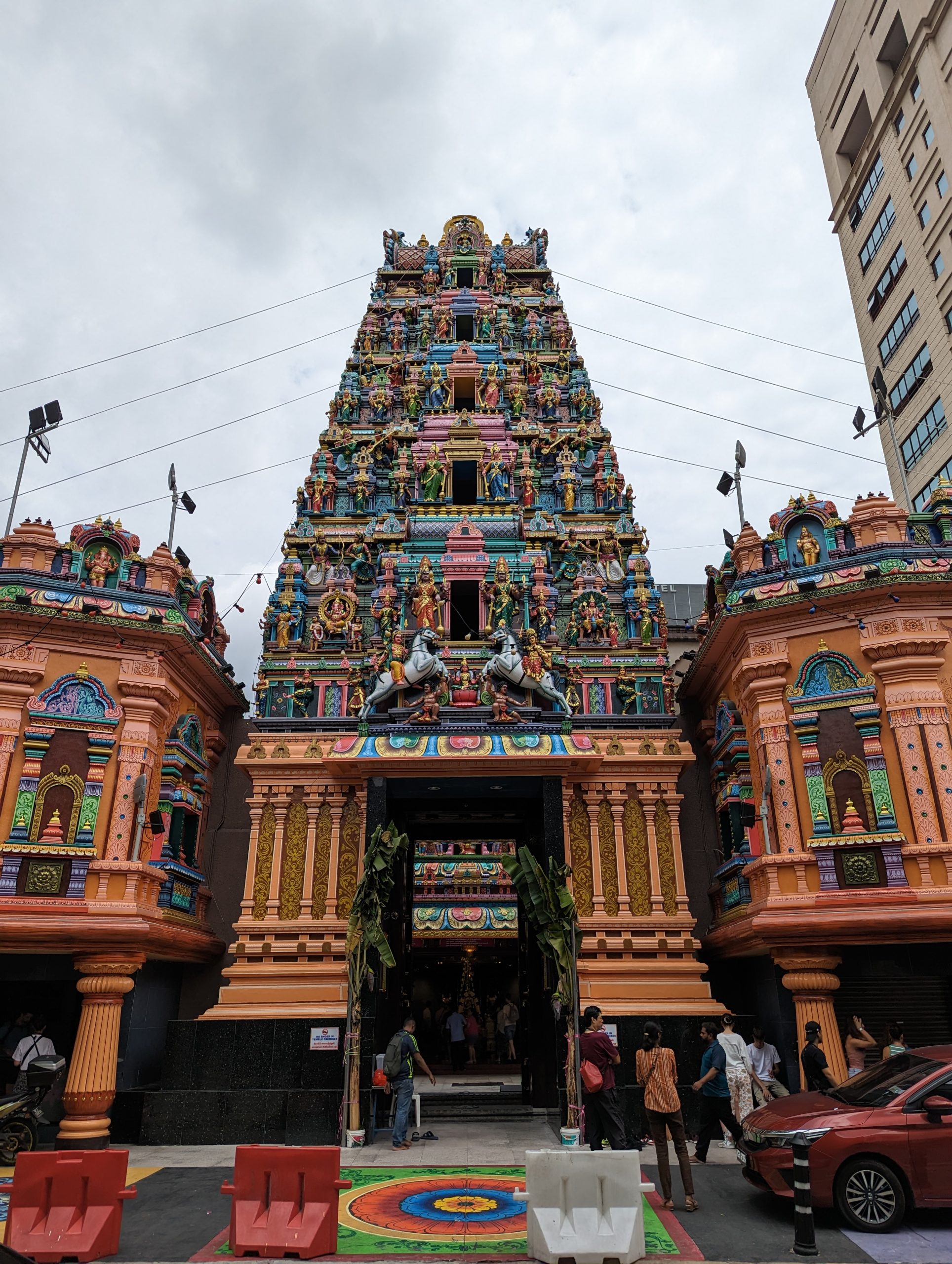
The Sri Mahamariamman Temple is the oldest Hindu temple in Kuala Lumpur, Malaysia. It was also founded in 1873 by K. Thamboosamy Pillai and is dedicated to the Hindu goddess Mariamman. The temple is located in the heart of Chinatown and is also a popular tourist destination. It is known for its colorful gopuram (gateway tower) and intricate carvings. The temple is open to the public and is a place of worship for many Hindu historical Sites in Malaysia.
Here are some additional details that you can add to your article:
- The temple is also a three-tiered structure with a height of 66 feet.
- The gopuram is also decorated with statues of Hindu gods and goddesses.
- The temple has also a number of shrines dedicated to different Hindu deities.
- A temple is a popular place of worship for Hindus during festivals such as Thaipusam and Deepavali.
5. The A’Famosa Fortress.

A’Famosa Fortress is a Portuguese fortress built in Malacca, Malaysia, in 1512. It is one of the oldest surviving European architectural remains in Southeast Asia. The fortress was built to protect the city from attack, and it once consisted of long ramparts and four major towers. Today, only the Porta de Santiago gateway and the Middelburg Bastion remain. The fortress is a popular tourist destination, and it is a reminder of the rich history of Malacca.
Here are some additional details that you can add to your article:
- The fortress was named “A Famosa” by the Portuguese, which means “The Famous”.
- The fortress was built by Afonso de Albuquerque, the Portuguese explorer who conquered Malacca in 1511.
- The fortress was destroyed by the Dutch in 1641, but it was later rebuilt by the Portuguese.
- The fortress was further damaged by the British in 1807.
- The fortress is currently undergoing restoration.
6. St. George’s Church, Penang.(Historical Sites in Malaysia)
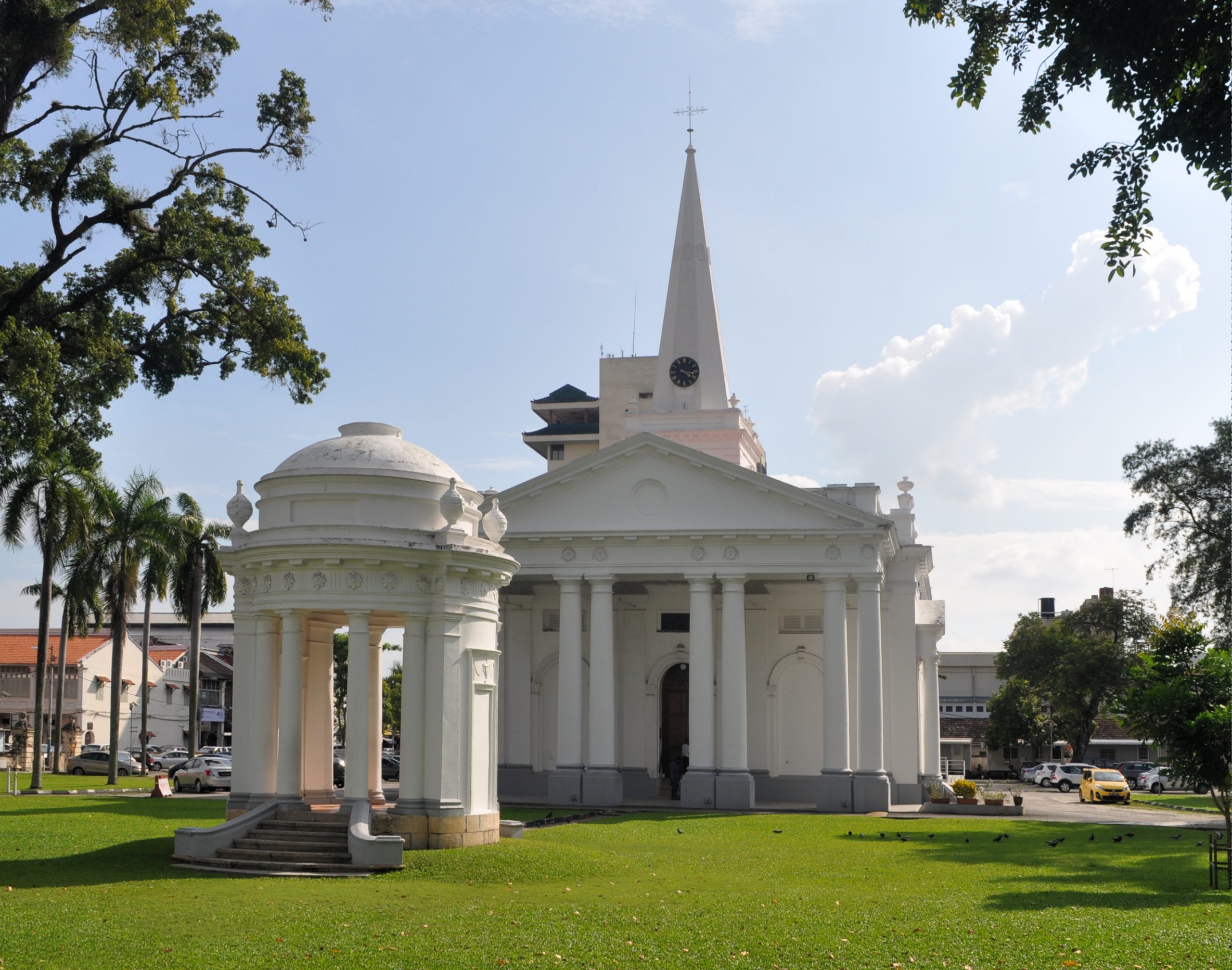
St. George’s Church is an Anglican church located in the city of George Town in Penang, Malaysia. It is the oldest purpose-built Anglican church in Southeast Asia. The church was built in 1816 and is a fine example of Georgian architecture. It is a popular tourist destination and is also used for regular worship services.
Here are some additional details that you can add to your article:
- The church is located on Lebuh Farquhar, a street in the UNESCO World Heritage Site of George Town.
- The church is also made of brick and has a bell tower.
- The interior of the church is decorated with stained glass windows and a pipe organ.
- The church is open to the public for tours and is also used for weddings and other events.
7. Kuan Yin Temple (Historical Sites in Malaysia)

The Kuan Yin Temple is also a Taoist temple located in George Town, Penang, Malaysia. It is also the oldest Taoist temple in Penang, and it is dedicated to the goddess of mercy, Guan Yin. The temple was built in 1728, and it has been rebuilt several times over the years. The current temple is a beautiful example of Chinese architecture, and it is a popular tourist destination.
Here are some additional details that you can add to your article:
- The temple is also located on Pitt Street in George Town, which is a UNESCO World Heritage Site.
- The temple is also home to a 10-foot-tall statue of Guan Yin, which is made of white marble.
- The temple is also home to a number of other deities, including the Jade Emperor, the God of Wealth, and the God of War.
- The temple is open to the public and is a popular place for worship and meditation.
8. Cheng Hoon Teng Temple.
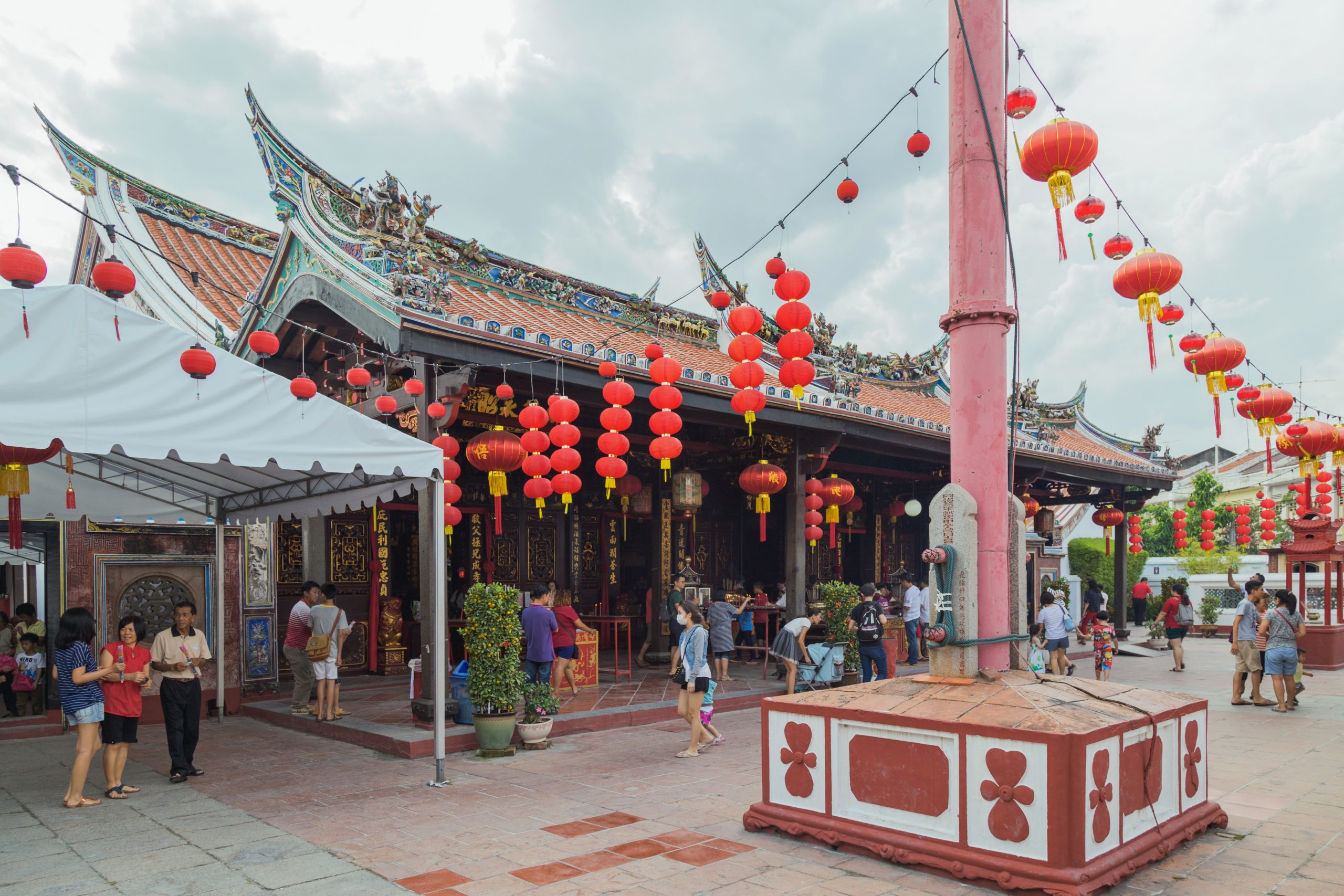
The Cheng Hoon Teng Temple is the oldest Chinese temple in Malaysia. It is located in Malacca City and was built in 1645. The temple is dedicated to the Goddess of Mercy, Kuan Yin, and also houses the deities of Buddha, Confucius, and Taoism. The temple is a beautiful example of Chinese architecture and has been designated a National Heritage Site by the Malaysian government.
Here also are some additional facts about the Cheng Hoon Teng Temple:
- The temple is also built in the traditional Chinese architectural style, with a sloping roof and upturned eaves.
- The temple is also made of wood and brick, and is decorated with intricate carvings and paintings.
- The temple has a large altar dedicated to Kuan Yin, as well as smaller altars dedicated to Buddha, Confucius, and Taoism.
- The temple is a popular tourist destination, and is also a place of worship for many Chinese Malaysians.
9. Snake Temple (Temple of the Azure Cloud)

The Snake Temple, also known as the Temple of the Azure Cloud, is a Chinese temple in Bayan Lepas, Penang, Malaysia. It was built in 1805 to honor Chor Soo Kong, a Buddhist monk who was also known for his healing powers and for giving shelter to snakes. The temple is also now home to a large number of snakes, including cobras, pythons, and vipers. The snakes are believed to be sacred and are said to bring good luck to the temple and its visitors. The Snake Temple is also a popular tourist destination and is known for its unique blend of Chinese and Buddhist cultures.
Here are some additional details that you can add to your article:
- The temple is also located about 2 kilometers from the Penang International Airport.
- It is also open to the public from 7am to 6pm daily.
- Visitors are also advised to dress modestly and to avoid wearing bright colors.
- It is also important to be respectful of the snakes and to avoid touching them.
- The temple is also a popular place to pray for good luck and health.
10. St Paul’s Church Melaka.
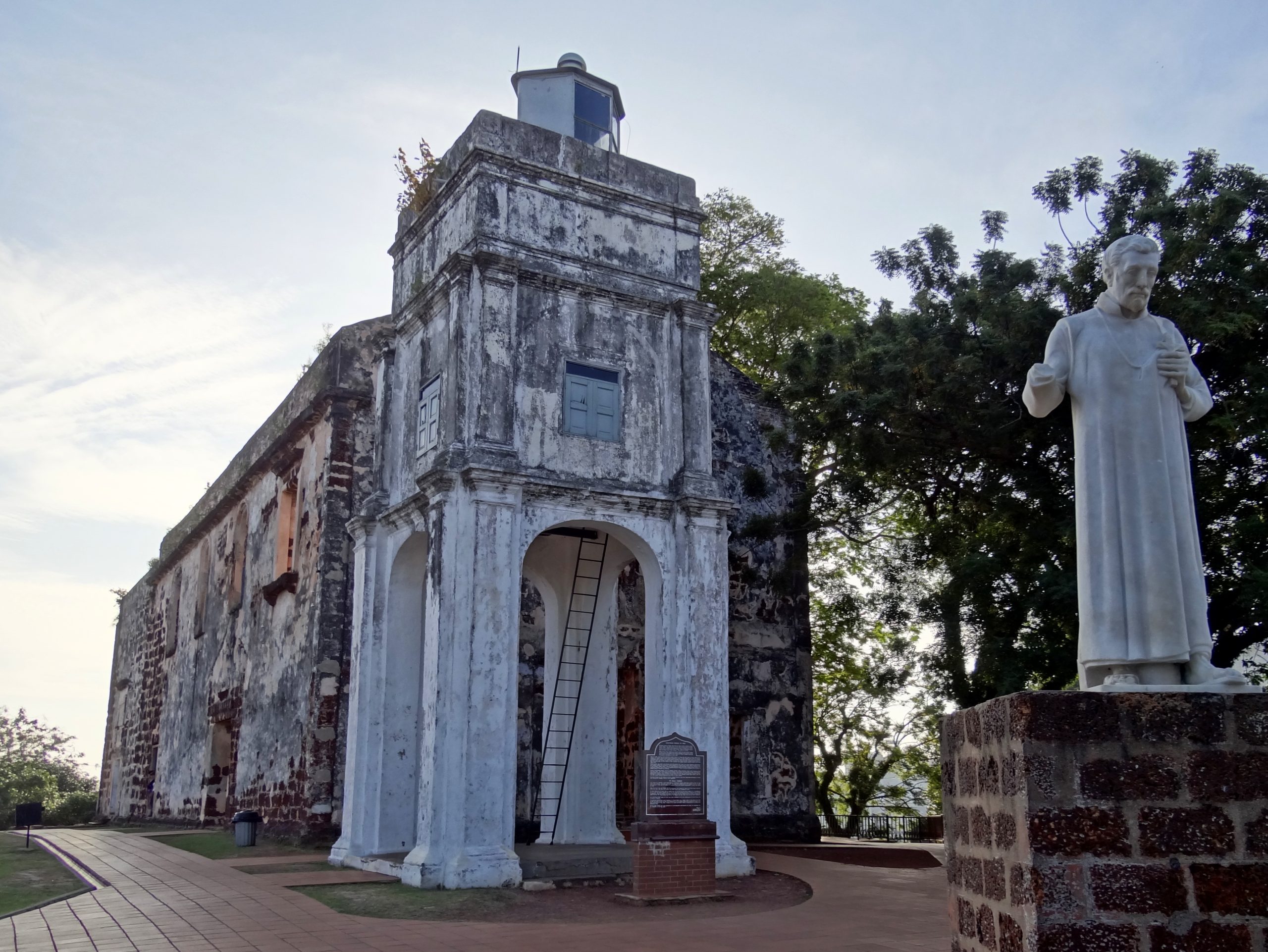
St. Paul’s Church is the oldest church in Malaysia and Southeast Asia. It was built in 1521 by Portuguese colonists and is located on the summit of St. Paul’s Hill in Melaka City. The church was originally a Catholic church, but it was converted to a Protestant church after the Dutch took over Melaka in the 17th century. The church was heavily damaged by the British in the 19th century, and it now stands in ruins. However, it is still an important historical landmark and a popular tourist destination.
Here are some additional details that you can include in your article:
- The church is also renowned as the place where the body of Francis Xavier, the pioneering Catholic missionary of Southeast Asia, was laid to rest for a period of eight months after his death at sea (from March 22nd, 1553 to December 11th, 1553).
- The church is located within the Malacca Museum Complex, which also includes the A Famosa ruins, the Stadthuys, and other historical buildings.
- The church is a popular tourist destination and offers stunning views of the city of Melaka.
11. Hang Tuah’s Well

Hang Tuah’s Well is a historical well located in Melaka, Malaysia. It is said to have been used by the legendary Malay warrior Hang Tuah to bathe and refresh himself. The well is believed to have magical powers, and people come from all over to bathe in its waters. It is said that the water can cure diseases, grant wishes, and even bring good luck. The well is a popular tourist destination, and it is also a place of pilgrimage for many Malays.
Here are some additional details that you can add to your article:
- Hang Tuah was a Malay warrior who lived in the 15th century. He is considered to be one of the greatest Malay heroes, and he is often depicted as a symbol of strength, courage, and loyalty.
- The well is located in the heart of Melaka, near the Sultanate Palace. It is a small, unassuming well, but it is said to be very powerful.
- The water from the well is said to be clear and refreshing. It is also said to have a sweet smell.
- People come to the well to bathe in its waters, hoping to be cured of their diseases or to have their wishes granted. The well is also a popular place for tourists to visit.
12. Hang Jebat and Hang Kasturi’s Mausoleum.

Hang Jebat and Hang Kasturi were two of the legendary Malay warriors who fought for the Sultanate of Malacca in the 15th century. After the Sultan became corrupt and oppressive, Hang Jebat rebelled against him, believing that he was no longer fit to rule. Hang Kasturi joined his friend in the rebellion, but they were both eventually killed by Hang Tuah, another of the Malay warriors.
The mausoleums of Hang Jebat and Hang Kasturi are located in Melaka, Malaysia. They are both simple structures, but they are still revered by many Malays as symbols of justice and courage.
Here are some additional details that you can add to your article:
- Hang Jebat and Hang Kasturi were part of a group of five warriors known as the “Malay Five”. The other three members were Hang Tuah, Hang Lekir, and Hang Lekiu.
- The rebellion of Hang Jebat and Hang Kasturi is a popular theme in Malay literature and culture. It is often seen as a story of good versus evil, with Hang Jebat representing the forces of justice and Hang Tuah representing the forces of tyranny.
- The mausoleums of Hang Jebat and Hang Kasturi are popular tourist attractions in Melaka. They are located in the Jonker Street area, which is also home to many other historical and cultural attractions.
13. Fort Cornwallis.
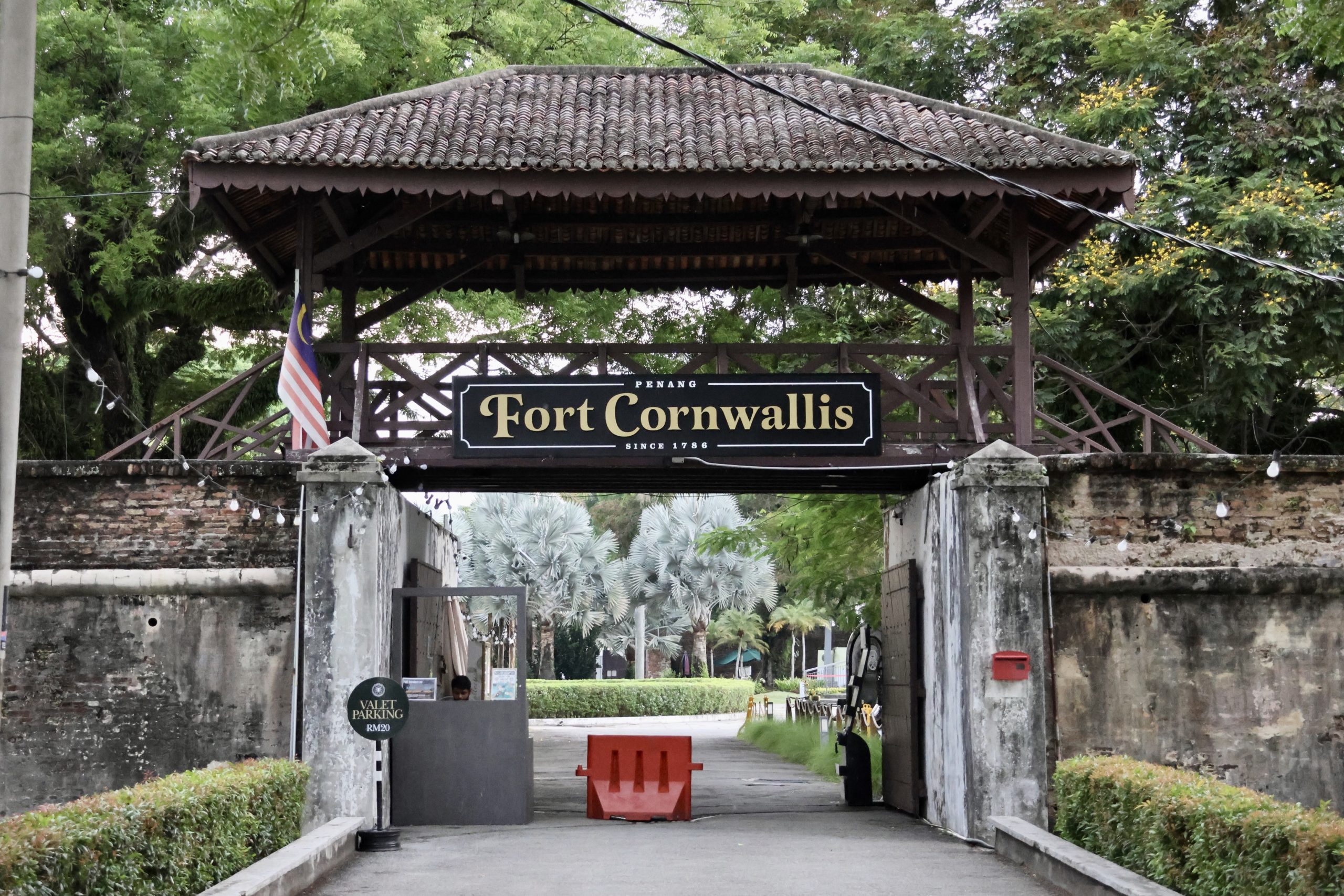
Fort Cornwallis is a bastion fort in George Town, Penang, Malaysia. It is the largest standing fort in Malaysia and was built by the British East India Company in the late 18th century. The fort is named after the then Lieutenant-General The 2nd Earl Cornwallis, the Governor-General of Bengal at the time of the fort’s construction. The fort never engaged in combat during its operational history, but it played an important role in the development of George Town as a trading port. Today, Fort Cornwallis is a popular tourist destination and is home to a number of historical buildings, including the Fort Cornwallis Lighthouse.
Here are some additional details about Fort Cornwallis:
- It is located in the heart of George Town, on the Padang Kota Lama (Old Town Square).
- The fort covers an area of 332,859 square feet (30,800 square meters).
- It has a star-shaped design with 12 bastions.
- The fort walls are made of brick and are up to 20 feet (6 meters) high.
- The fort has a number of historical buildings, including the Fort Cornwallis Lighthouse, the Magazine, and the Officers’ Quarters.
- Fort Cornwallis is a popular tourist destination and is open to the public.
14. Christ Church Melaka

Christ Church Melaka is an 18th-century Dutch-built Anglican church in the city of Malacca, Malaysia. It is the oldest functioning Protestant church in Malaysia and is within the jurisdiction of the Lower Central Archdeaconry of the Anglican Diocese of West Malaysia. The church is built in Dutch Colonial architecture style and is laid out in a simple rectangle. The ceiling rises to 40 feet and is spanned by wooden beams, each carved from a single tree. The roof is covered with Dutch tiles and the walls were raised using Dutch bricks built on local laterite blocks then coated with Chinese plaster. The floors of the church are paved with granite blocks originally used as ballast for merchant ships.
The church is a popular tourist destination and is also used for weddings and other events. It is a reminder of the rich history of Malacca and the many cultures that have influenced the city.
Here are some additional facts about Christ Church Melaka:
- It was built in 1741 to serve the Dutch community in Malacca.
- The church was damaged during the British occupation of Malacca in the 19th century, but it was restored in the early 20th century.
- The church is a registered National Heritage Site of Malaysia.
- It is open to the public for tours and worship services.
15. Sultan Ibrahim Building(Historical Sites in Malaysia)
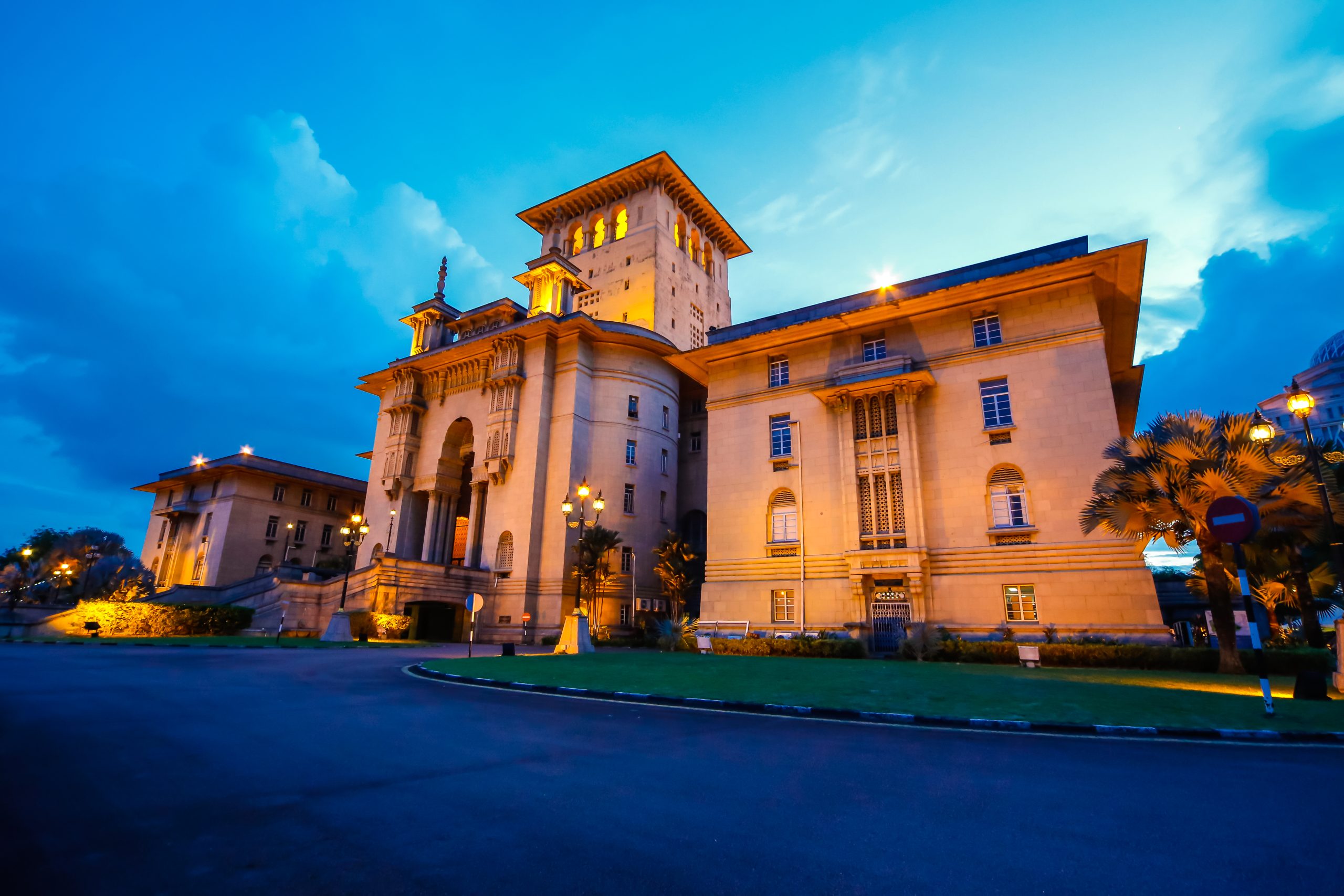
The Sultan Ibrahim Building is a former state secretariat building in Johor Bahru, Malaysia. It was built between 1936 and 1939 and was completed in 1940. The building is a blend of Western and Malay architectural styles and is considered one of the most important historical landmarks in Johor. It was the tallest building in Malaya during the pre-independence era and was used by the Japanese Imperial Army as a fortress and command center during World War II. The building is currently closed to the public but is still a popular tourist destination.
Here are some additional details about the Sultan Ibrahim Building:
- The building is located at Bukit Timbalan in Johor Bahru.
- It is 60,000 square feet in size.
- It has 10 floors.
- The building was designed by Arthur Benison Hubback, who also designed the Sultan Abdul Samad Building in Kuala Lumpur.
- The building was named after the late Sultan Ibrahim of Johor, who was the ruler of Johor at the time of its construction.
- The building is currently undergoing renovation and is expected to be reopened to the public in 2024.
FAQs related to Historical Sites in Malaysia
1. What are some of the most famous historical sites in Malaysia?
- Malaysia boasts several famous historical sites, including the Malacca Historic City, Penang George Town, Kuala Lumpur’s Sultan Abdul Samad Building, and the Batu Caves Temple.
2. Can you recommend some UNESCO World Historical Sites in Malaysia?
- Malaysia has two UNESCO World Heritage Sites: George Town in Penang and Melaka Historic City. These sites are recognized for their cultural and historical significance.
3. What is the historical significance of George Town in Penang?
- George Town is known for its well-preserved colonial-era buildings, diverse cultural influences, and street art. It showcases Historical Sites in Malaysia’s’s multicultural heritage and history as a trading port.
4. Why is Malacca (Melaka) considered historically significant?
- Malacca is historically significant for its role as a major trading port in the 15th century, attracting various cultures and leading to the formation of the Malay Sultanate. It’s known for its historical architecture, forts, and museums.
5. What are some notable museums and cultural centers in Malaysia for history enthusiasts?
- Malaysia has many museums and cultural centers, including the National Museum (Muzium Negara) in Kuala Lumpur, the Penang Peranakan Mansion, and the Islamic Arts Museum.

